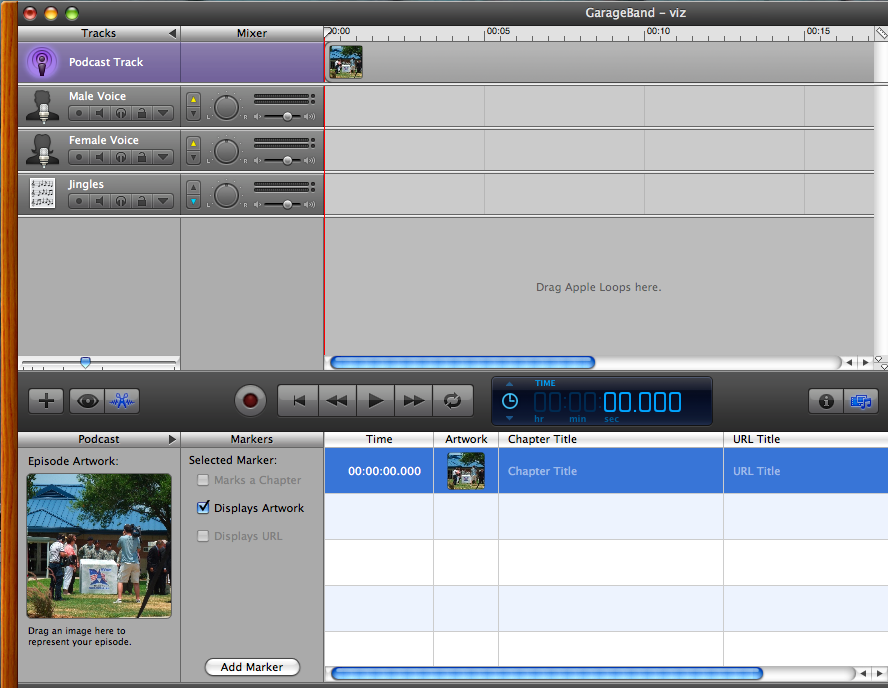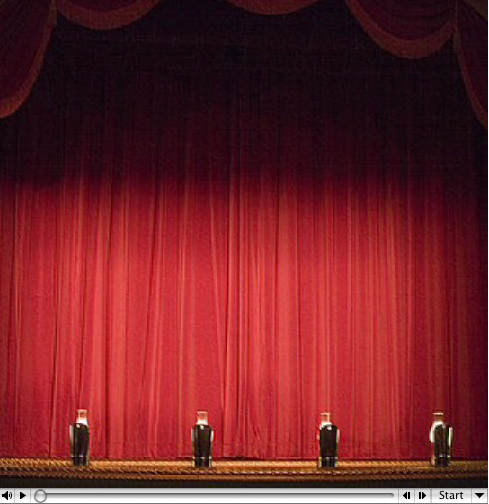
Image Credit: The Guardian
Samuel Beckett's Play (dir. Anthony Minghella, 2000)
This is my last Viz posting for the year, so I thought I’d
be introspective, or perhaps, self-referential. Specifically, I want to talk about podcasting pedagogy
I’ve been experimenting with this semester and how it’s raised interesting
questions in our classroom about the relationship between visual and auditory rhetoric. The final assignment for
our class was a podcast in which students delivered an argument on a contemporary controversy. It was very strange for all of us to
rely so heavily on voice without a piece of paper to mediate the exchange. Early twentieth-century theories of oral delivery such as those by T. Sturge Moore
advocated that speakers of poetry should stand behind a curtain so that listeners
could listen more attentively and W.B. Yeats suggested that his Abbey Theatre
actors should be placed in barrels to train them against using distracting motions. Not wanting quite so
drastic an approach, I at least thought that a focus on the auditory would
push my students to consider their words in action and more carefully focus on
simplicity, organization and delivery.

Image Credit: Screen Shot of Garageband
While I originally intended to outlaw any visuals, I
relented and allowed them to use Garageband’s artwork track. This decision was inspired in part by the
interesting results of the collaboration between UT’s Undergraduate Writing
Center and Badgerdog, a local Austin creative writing program for K-12
students. I loved the way that
participants in this program incorporated imagery into their podcasts without
losing focus on the attention to language that makes podcasting such an
interesting medium. The results were mixed. Some students seemed really motivated by the challenge of auditory delivery and blended interesting music, noises and audio clips into their presentation to create variety in their performances. Others presented simple, elegant spoken arguments with clear delivery. Then there were less successful uses of the medium: students who read papers that should have remained on paper and others who found oral delivery challenging for a variety of reasons. Those students that chose to incorporate visuals were not uniformly successful. I asked students for feedback on what they think defines a good podcast and very few mentioned visuals. They seemed to appreciate the medium as primarily auditory and one best approached through auditory innovation.

Image Credit: Undergraduate Writing Center
In general, my students were much better trained in visual literacy than, pardon the paradox, auditory
literacy. However, they seemed to appreciate the particular auditory rhetoric involved in podcasts (which of course borrows heavily from old media such as radio)
that to varying degrees they attempted to capture in their presentations. I
wanted to end on this note because I think that many of our blogs on Viz are about
the audio-visual or performative text rather than the exclusively visual and that we might want to further consider how teaching auditory literacy might help students better understand contemporary audio-visual rhetoric.



Recent comments
2 years 29 weeks ago
2 years 44 weeks ago
2 years 44 weeks ago
2 years 50 weeks ago
3 years 4 weeks ago
3 years 4 weeks ago
3 years 4 weeks ago
3 years 6 weeks ago
3 years 6 weeks ago
3 years 6 weeks ago